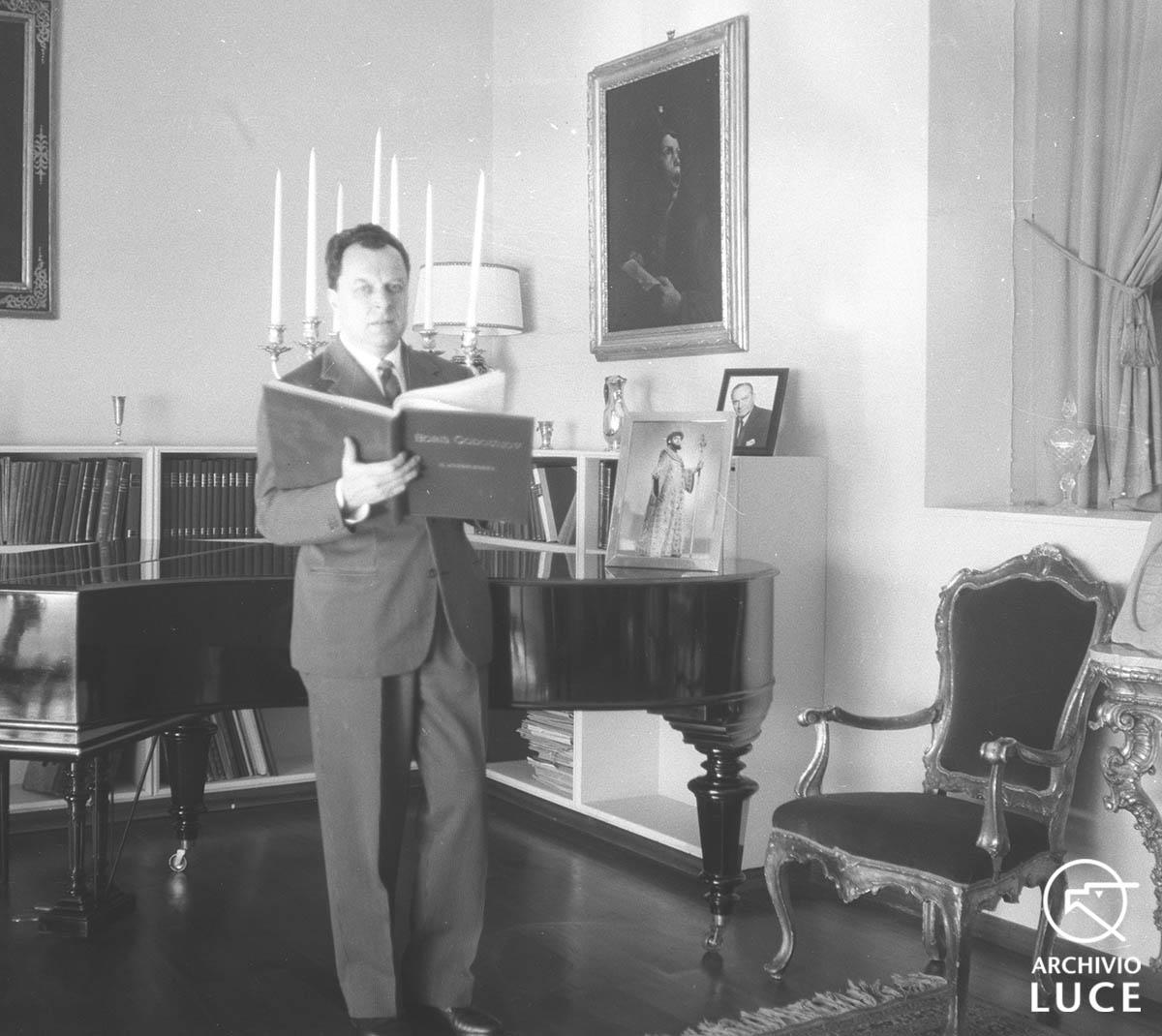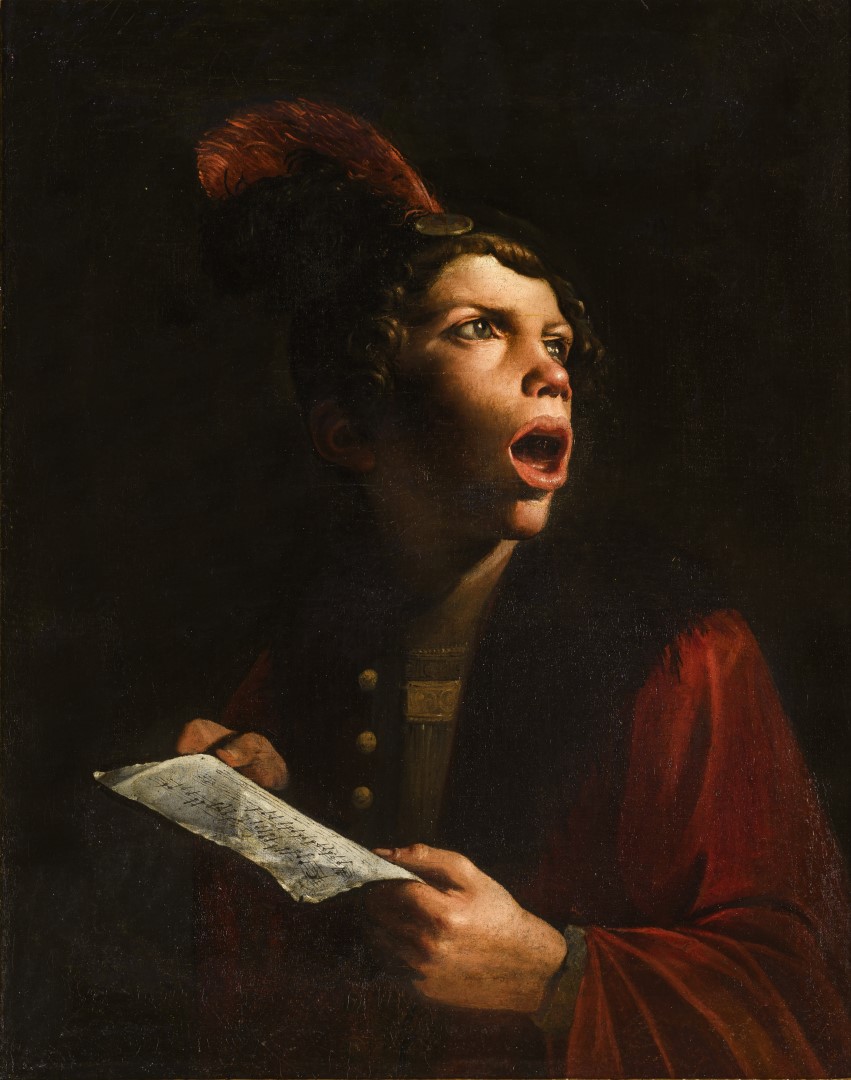The Collection

The artistic figure of Boris Christoff, beyond being nurtured by his well known philological and professional rigor, was enriched by the versatility of the man, who was a passionate bibliophile, an attentive and curious art lover and a great collector of ancient books, paintings and silverware.
From the legendary collection that Boris assembled over the course of his life, the Christoff Foundation preserves these two splendid paintings, of which it has recently commissioned an important conservative restoration operation to restore them to their ancient beauty.
Cantore
Pietro Paolini (Lucca, 1603-1681)
It is not known when the painting became part of the Christoff Collection, nor what was the origin of the attribution to Pietro Paolini. The Cantore was exhibited to the public for the first time on the occasion of the exhibition “Rome at the time of Caravaggio, 1600-1630”, set up at the National Museum of Palazzo Venezia in Rome between November 2011 and February 2012. The work was presented then as an unpublished work, having not previously been included in the corpus of the painter from Lucca. Recent studies have highlighted his similarities with the painting The Young Violinist, currently preserved in the Chazen Museum of Art, University of Wisconsin, historically attributed to Angelo Caroselli but now also recognized as a work by Pietro Paolini.
The restoration of the painting carried out in the recent months has given back light and softness to the colors and shapes of this extraordinary painting, which can be viewed, on request, at the MUSA, the Museum of Musical Instruments of the Santa Cecilia National Academy, at the Auditorium Parco della Musica in Rome.
Pietà
Lorenzo D’Alessandro, known as Severinate (San Severino Marche approximately 1455-1501)
It is a very sweet depiction of the Virgin Mary tenderly embracing the dead Christ; the images are immersed in a clear light that highlights the delicacy of the colors and the expressions of the faces on a golden leaf background. In addition to its evident intrinsic and artistic value, the painting, being dated (1491), is considered of fundamental importance for the understanding of the activity and evolution of its author, also in consideration of the enormous losses that the corpus of his works has suffered in the course of history due to earthquakes, destruction of sacred buildings or noble palaces, theft and alienation.
The work is currently kept at the MUSA, the Museum of Musical Instruments of the Santa Cecilia National Academy, at the Auditorium Parco della Musica in Rome, and can be viewed on request.


